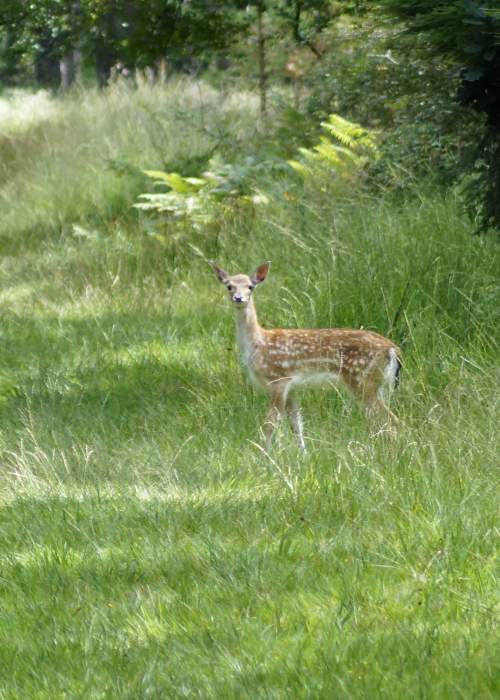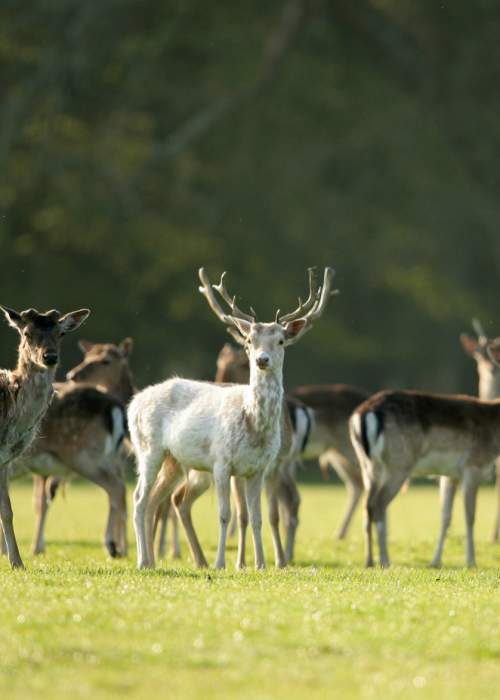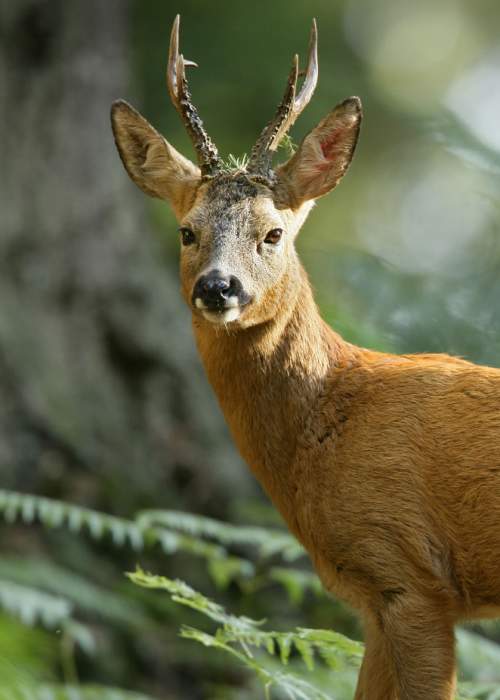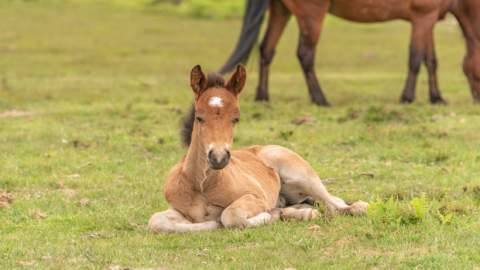New Forest Deer
The New Forest is home to some of the most beautiful and elusive wild animals in the UK - the deer. With their graceful movements and quiet presence, they offer a rare glimpse into a wilder world, just beneath the woodland canopy.
Five species of deer roam the New Forest: fallow, roe, red, sika and muntjac. Though shy by nature, you may spot them at dawn or dusk grazing on the heath or slipping between the trees. Herd animals by instinct, deer often move together and favour quieter, sheltered areas during the day.
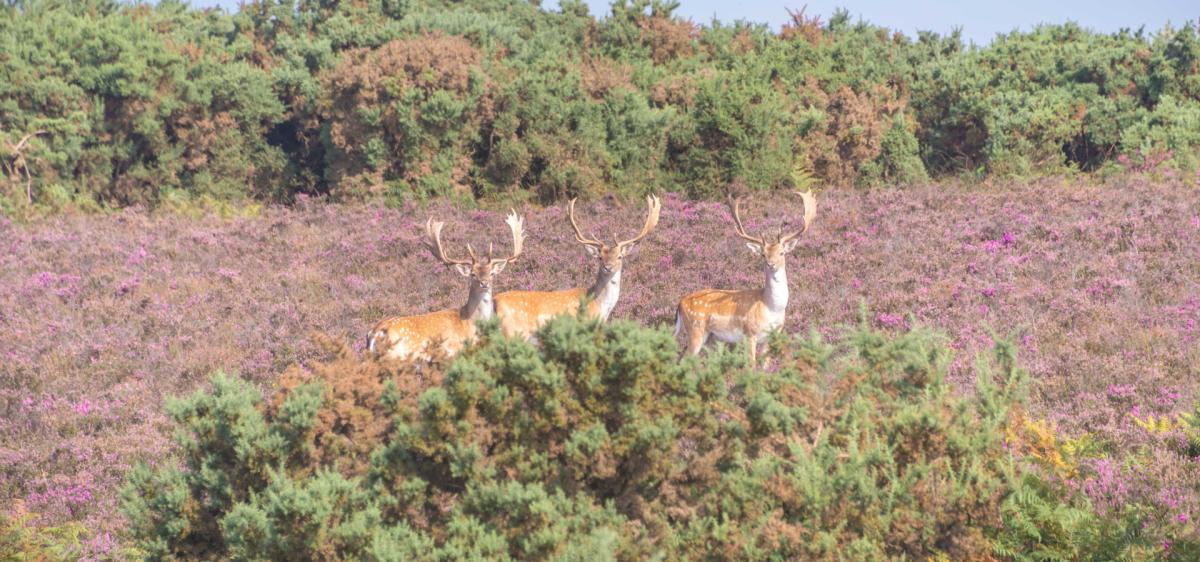
Meet the deer species
Fallow Deer
Fallow deer are the most common in the New Forest, easily recognised by their white-spotted coats in summer and distinctive black-and-white rumps. Their antlers are broad and palmate, and they’re often seen in herds grazing in open areas. Does (female deer) give birth to a single fawn in early summer.
Roe Deer
Small and elegant, roe deer stand around 70cm tall and are most active at dawn and dusk. Their reddish coats turn greyer in winter, and males grow short, upright antlers. Roe deer fawns are often hidden in long grass, so tread lightly and keep dogs under close control in spring and summer.
Red Deer
The largest of the UK’s wild mammals, red deer are an impressive sight. With a rich red-brown coat and large branching antlers, they are typically found in the western parts of the Forest. They graze on grass and heather, and live in small herds. Around 125 red deer currently live in the New Forest.
Sika Deer
Originally from Japan, sika deer were introduced to the Beaulieu Estate in the early 1900s. Similar in size to fallow deer but darker in colour, they tend to be more elusive. Managed carefully by Forestry England, their numbers are kept low to prevent interbreeding with red deer.
Muntjac Deer
Much smaller than the other species, muntjac resemble large dogs and are known for their loud, barking calls. They are rarely seen in the New Forest but may be spotted around Beaulieu. Muntjac breed all year round and can pose a threat to native deer species due to their high reproduction rate.
Where to spot deer in the New Forest
One of the best places to see fallow deer up close is at Bolderwood Deer Sanctuary, near Lyndhurst, where there is a platform where you can watch them in the wild in the clearing ahead and learn more about the deer from the information boards.
You’re most likely to see sika deer in the south of the New Forest, particularly near Beaulieu. These were originally introduced in the early 20th century and remain carefully managed to prevent crossbreeding with red deer.
The autumn rutting season (September to November) is a particularly dramatic time to observe deer behaviour - with competing stags, echoing calls, and impressive antler displays.
How to protect our deer
The New Forest is a special place for people and wildlife - and it’s up to all of us to help protect it. Here’s how you can support the welfare of wild deer:
-
Keep your distance - never approach, touch, or feed deer
-
Keep dogs on leads in areas where deer are likely to be present, especially during calving and rutting seasons
-
Drive with care, especially at dawn and dusk, when deer are most active
-
Take your litter home - dropped food and rubbish can be harmful to deer and other animals
Every respectful visit helps ensure the deer of the New Forest continue to thrive for generations to come.

